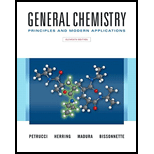
Concept explainers
(a)
Interpretation:
The structural formula for
Concept introduction:
The formula which represents the bonding and type of bonds that hold the atoms in a molecule together is said to be a structural formula.
Answer to Problem 1E

Explanation of Solution
There is a difference between structural formula and condensed formula.
The formula which represents the bonding and type of bonds that hold the atoms in a molecule together is said to be a structural formula.
In condensed structural formula, the organic structures of the compound are written in a line of text showing all the atoms in the molecule and omitting the vertical and horizontal bonds.
The structural formula for

(b)
Interpretation:
The structural formula for
Concept introduction:
The formula which represents the bonding and type of bonds that hold the atoms in a molecule together is said to be a structural formula.
Answer to Problem 1E

Explanation of Solution
There is a difference between structural formula and condensed formula.
The formula which represents the bonding and type of bonds that hold the atoms in a molecule together is said to be a structural formula.
In condensed structural formula, the organic structures of the compound are written in a line of text showing all the atoms in the molecule and omitting the vertical and horizontal bonds.
The structural formula for

(c)
Interpretation:
The structural formula for
Concept introduction:
The formula which represents the bonding and type of bonds that hold the atoms in a molecule together is said to be a structural formula.
Answer to Problem 1E
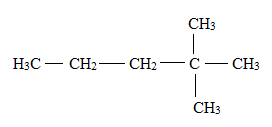
Explanation of Solution
There is a difference between the structural formula and the condensed formula.
The formula which represents the bonding and the type of bonds that hold the atoms in a molecule together is said to be a structural formula.
In condensed structural formula, the organic structures of the compound are written in a line of text showing all the atoms in the molecule and omitting the vertical and horizontal bonds.
The structural formula for
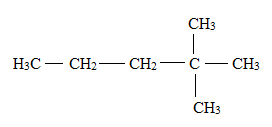
(d)
Interpretation:
The structural formula for
Concept introduction:
The formula which represents the bonding and the type of bonds that hold the atoms in a molecule together is said to be a structural formula.
Answer to Problem 1E
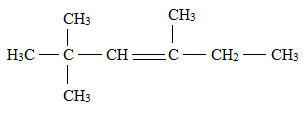
Explanation of Solution
There is a difference between a structural formula and a condensed formula.
The formula which represents the bonding and type of bonds that hold the atoms in a molecule together is said to be a structural formula.
In condensed structural formula, the organic structures of the compound are written in a line of text showing all the atoms in the molecule and omitting the vertical and horizontal bonds.
The structural formula for
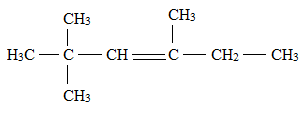
Want to see more full solutions like this?
Chapter 26 Solutions
EBK GENERAL CHEMISTRY
- For questions 1-4, consider the following complexes: [Co(CN)6], [COC14]², [Cr(H2O)6]²+ 4. Room temperature (20°C) measurement of molar magnetic susceptibility (Xm) for Fe(NH4)2(SO4)2×6H2O is 1.1888 x 102 cgs (Gaussian units). Calculate effective magnetic moment and provide a number of unpaired electrons for the iron ion. Use this number to rationalize the coordination geometry around iron center. (4 points)arrow_forward7. Describe the expected 31P and 19F (where applicable) NMR spectral patterns for the following compounds (indicate number of signals and their splitting patterns). a) tetraphenyldiphosphine Ph Ph P-P Ph Ph Ph Ph ' b) tetraphenyldiphosphine monoxide P-P-Ph Ph (2 points) (2 points c) tetrafluorophosphonium hexafluorophosphate [PF4]*[PF6]¯ (4 points)arrow_forward3. For questions 1-4, consider the following complexes: [Co(CN)6]4, [COC14]², [Cr(H2O)6]²+ Which (if any) of these complexes would be expected to display Jahn-Teller distortion? (2 points)arrow_forward
- What is Instrumental Neutron Activation and what are the advantages and disadvantages in using its applications? (I'm doing an in class assignment and need better understanding of what the instrument can be used for) Please include references so that I can better understand the application of how the instrument works!arrow_forwardWhat is Isotope Analysis and what are the advantages and disadvantages in using its applications and instrumentalization? Please include references so that I can better understand how the instrument works!arrow_forward5. Count the electrons on the following complexes and state whether they follow the 18- electron rule: (3 points) Fe(CO)5 Ni(PMe3)4 PMe3 is trimethylphosphine Mn(CO)5Brarrow_forward
- For questions 1-4, consider the following complexes: [Co(CN)6]+, [CoCl4]², [Cr(H2O)6]²+ 2. Draw the corresponding d-orbital splitting for each of the complexes; predict the spin- state (low-spin/high spin) for each of the complexes (if applicable); explain your arguments. Calculate the crystal field stabilization energy for each complex (in Ao or At). (6 points)arrow_forwardFor questions 1-4, consider the following complexes: [Co(CN)6]4, [COC14]², [Cr(H2O)6]²+ 1. Assign oxidation number to the metal, then indicate d-electron count. (3 points)arrow_forwardUsing iodometry I want to titrate a sodium thiosulfate solution and I use 15 mL. If I have 50 mL of a 0.90 M copper solution and KI, what will be the molarity of sodium thiosulfate?arrow_forward
 Chemistry: The Molecular ScienceChemistryISBN:9781285199047Author:John W. Moore, Conrad L. StanitskiPublisher:Cengage Learning
Chemistry: The Molecular ScienceChemistryISBN:9781285199047Author:John W. Moore, Conrad L. StanitskiPublisher:Cengage Learning Chemistry: Principles and PracticeChemistryISBN:9780534420123Author:Daniel L. Reger, Scott R. Goode, David W. Ball, Edward MercerPublisher:Cengage Learning
Chemistry: Principles and PracticeChemistryISBN:9780534420123Author:Daniel L. Reger, Scott R. Goode, David W. Ball, Edward MercerPublisher:Cengage Learning Chemistry by OpenStax (2015-05-04)ChemistryISBN:9781938168390Author:Klaus Theopold, Richard H Langley, Paul Flowers, William R. Robinson, Mark BlaserPublisher:OpenStax
Chemistry by OpenStax (2015-05-04)ChemistryISBN:9781938168390Author:Klaus Theopold, Richard H Langley, Paul Flowers, William R. Robinson, Mark BlaserPublisher:OpenStax Chemistry for Today: General, Organic, and Bioche...ChemistryISBN:9781305960060Author:Spencer L. Seager, Michael R. Slabaugh, Maren S. HansenPublisher:Cengage Learning
Chemistry for Today: General, Organic, and Bioche...ChemistryISBN:9781305960060Author:Spencer L. Seager, Michael R. Slabaugh, Maren S. HansenPublisher:Cengage Learning ChemistryChemistryISBN:9781305957404Author:Steven S. Zumdahl, Susan A. Zumdahl, Donald J. DeCostePublisher:Cengage Learning
ChemistryChemistryISBN:9781305957404Author:Steven S. Zumdahl, Susan A. Zumdahl, Donald J. DeCostePublisher:Cengage Learning





